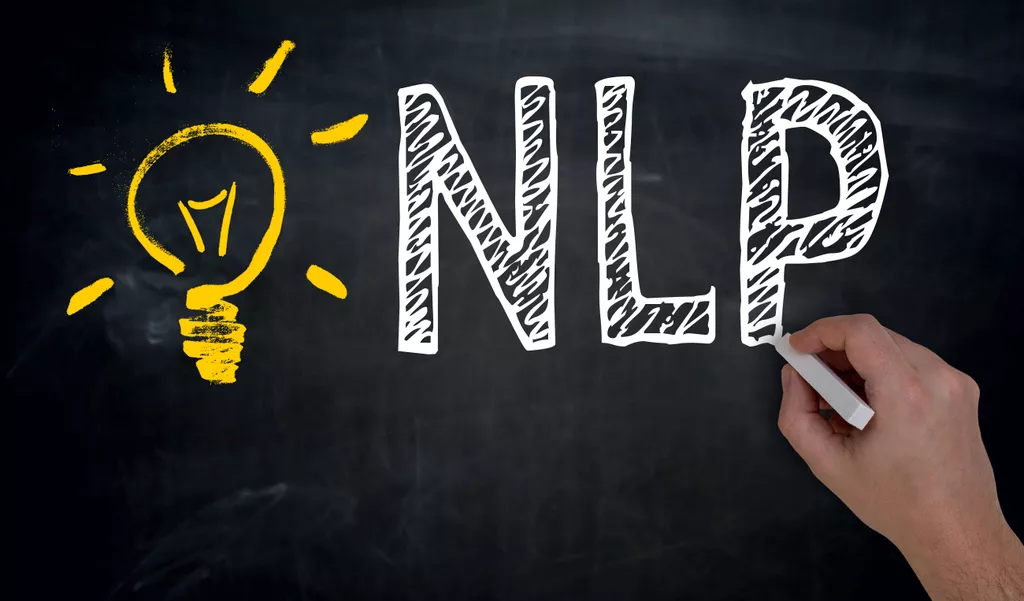Chatbots use natural language processing (NLP) to comprehend and answer patient queries. For example, they can give information on common medical conditions and symptoms and even link to electronic health records so people can access their health information. Digital technology in healthcare industry is fast proving to be a game changer by extensive deployment of automation and AI. A fine example of that would be the introduction of chatbots to replace humans, thus cutting costs and removing the need for visiting a doctor in cases where only self-care is required. A healthcare virtual assistant can easily help you overcome the problem of managing appointments.
- This will allow doctors and healthcare professionals to focus on more complex tasks while chatbots handle lower-level tasks.
- Let’s create a contextual chatbot called E-Pharm, which will provide a user – let’s say a doctor – with drug information, drug reactions, and local pharmacy stores where drugs can be purchased.
- Healthcare accessibility made waves during the COVID-19 pandemic when numerous people had issues reaching their healthcare providers.
- They can reduce costs dramatically, lessen the burden on medical professionals and improve patient experiences.
- In the wake of stay-at-home orders issued in many countries and the cancellation of elective procedures and consultations, users and healthcare professionals can meet only in a virtual office.
- In the next section, we’ll tell you more about developing an AI-powered chatbot to improve or augment your services.
Healthcare Chatbots are used to provide assistance and diagnosis to patients or healthcare providers via the internet. Chatbots that run on cloud-based platforms provide metadialog.com multiple benefits such as easy scalability and management capabilities. Cloud-based platforms enable a quick deployment of Healthcare Chatbots to increase productivity.
Deliver personalized AI-powered conversational healthcare experiences
Chatbots can answer FAQs about insurance policies, helping patients understand what ailments are covered under their policy and what aren’t. As you can see, chatbot technology can be a major disruptor in the way insurance information is disseminated, and the future definitely looks promising. Prescription refills is something that most patients get in touch with a doctor for, since the key to beating a disease is having access to medicines consistently. You can build a simple chatbot for your website that can fetch the patient details, cross check them with the visitors to the doctors at your hospital, and provide prescription refills. Chatbots can also remind patients when their prescriptions are overdue, and, in case they are facing difficulty in getting their prescription refilled, the hospitals can step in and address the issue as soon as possible. In manual customer service, the requirements for more live agents increase with the spike in the number of customers.
Can chatbot give medical advice?
AI chatbots and virtual assistants can help doctors with routine tasks such as scheduling appointments, ordering tests, and checking patients' medical history. AI can also help analyze patient data to detect patterns and provide personalized treatment plans.
Getting patient feedback is essential for enhancing healthcare services. The medical support team is overworked and kept busy with frequent questions, which causes them to miss other patients. A healthcare chatbot can provide an instant response to every general query a patient has by acting as a one-stop shop. These frequently asked questions are one of the most prevalent aspects of any website. While chatbots can never fully replace human doctors, they can serve as primary healthcare consultants and assist individuals with their everyday health concerns. This will allow doctors and healthcare professionals to focus on more complex tasks while chatbots handle lower-level tasks.
Frequently Asked Questions (FAQs)
Currently, too much misinformation abounds several common public health concerns, such as COVID-19. Therefore, several institutions developed virtual assistant systems to ensure that individuals receive correct information and help save patient lives. These are the tech measures, policies, and procedures that protect and control access to electronic health data. These measures ensure that only authorized people have access to electronic PHI. Furthermore, this rule requires that workforce members only have access to PHI as appropriate for their roles and job functions. Furthermore, Rasa also allows for encryption and safeguarding all data transition between its NLU engines and dialogue management engines to optimize data security.
- But setting expectations is a crucial first step before using chatbots in healthcare industry.
- Even though building a custom chatbot from scratch may be much more challenging than using a ready solution, it is very likely to pay off.
- Therapy chatbots that are designed for mental health, provide support for individuals struggling with mental health concerns.
- Since users’ privacy is at stake, any app development company must follow HIPAA compliance for healthcare app development while developing conversational chatbots.
- When a patient sees their therapist again a week later, they frequently ask for past documentation.
- Insurance companies require access to medical information to guide clients and employees towards appropriate medical care so that they can avoid unnecessary medical costs.
So, healthcare providers can use a chatbot dedicated to answering their patient’s most commonly asked questions. Questions about insurance, like covers, claims, documents, symptoms, business hours, and quick fixes, can be communicated to patients through the chatbot. Healthcare chatbots offer the convenience of having a doctor available at all times. With a 99.9% uptime, healthcare professionals can rely on chatbots to assist and engage with patients as needed, providing answers to their queries at any time. Healthcare chatbots can streamline the process of medical claims and save patients from the hassle of dealing with complex procedures.
Use cases of chatbots in the US healthcare industry
Social media is in a frenzy discussing what our new future will look like. Next, HIPAA compliance should be added to set the standards for using, handling, and storing sensitive healthcare data. The act defines rules for the use of protected health information, which is all data that can be used to identify a patient. As a result, each person involved in the development of an AI assistant that has access to your PHI must be HIPAA compliant. The disease rarely happens on time, but the doctor is not a robot, he cannot physically be in touch around the clock. The “virtual health worker” at any time will hear complaints, perform a primary survey and tell the patient how to proceed at the first signs of the disease.
Kore.ai Applauded by Frost & Sullivan for Delivering a Scalable and … – Canada NewsWire
Kore.ai Applauded by Frost & Sullivan for Delivering a Scalable and ….
Posted: Tue, 16 May 2023 07:00:00 GMT [source]
Some of these errors can be very serious and dangerous, such as giving wrong medication instructions or suggesting that the patient developed a new condition that does not exist. However, this also means that many companies rely on big data and AI to provide their services. They use it as a means to gather personal information about their customers and patients to improve their services. The healthcare industry is one of the most data-driven industries in the world. The amount of information that can be shared, collected, and analyzed has grown exponentially over the past decade. This has led to an influx of data-based research, including machine learning and artificial intelligence.
Scheduling
However, with a healthcare chatbot, you need to ask when is a good time for them to meet with you, and they’ll suggest a time right then and there. Patients can use the bot to schedule appointments, order prescriptions, and refill medications. The bot also provides information on symptoms, treatments, and other important health tips. Chatbots have become increasingly popular because they can provide a convenient way for patients to get answers to their questions while they’re at work or on the go. When a patient does require human intervention, Watson Assistant uses intelligent human agent handoff capabilities to ensure patients are accurately routed to the right medical professional.
This is why an open-source tool such as Rasa stack is best for building AI assistants and models that comply with data privacy rules, especially HIPAA. The Health Insurance and Portability and Accountability Act (HIPAA) of 1996 is United States regulation that sets the standards for using, handling, and storing sensitive healthcare data. The act outlines rules for the use of protected health information (PHI). After training your chatbot on this data, you may choose to create and run a nlu server on Rasa.
Which kind of data is most commonly used in the healthcare sector?
Basically, with the use of chatbots, patients can contact doctors easily and can get all-in-one solutions. Informative chatbots enable the users to get important data in form of pop-ups and notifications. This type of chatbot is used by mental health websites and sites of medical institutes that are awaiting patients about new diseases. Informative chatbots are used to offer important inputs to the users and it is according to the audience.
As we progress, we continue to find more and more ways through which the world can benefit. This is made possible using the latest technologies, including artificial intelligence, machine learning, and more. Let’s walk through a few of the popular applications of chatbot healthcare apps. At the back, chatbots use artificial intelligence and machine learning to deliver hyper-personalized results. While these can be not very accurate in some cases, the technology has shown to be critical in many situations.
Competitive Landscape and Healthcare Chatbots Market Share Analysis
As a result, healthcare chatbots must take care of the tone of their responses, relevance, and context. A US-based care solutions provider got a patient mobile app integrated with a medical chatbot. The chatbot offered informational support, appointment scheduling, patient information collection, and assisted in the prescription refilling/renewal.
What are the limitations of healthcare chatbots?
- No Real Human Interaction.
- Limited Information.
- Security Concerns.
- Inaccurate Data.
- Reliance on Big Data and AI.
- Chatbot Overload.
- Lack of Trust.
- Misleading Medical Advice.
They can also provide valuable information on the side effects of medication and any precautions that need to be taken before consumption. Patients can quickly assess symptoms and determine their severity through healthcare chatbots that are trained to analyze them against specific parameters. The chatbot can then provide an estimated diagnosis and suggest possible remedies.
Frequently asked questions
Mental issues have been surmounting, and there is no way better to deal with them than intelligent software programs. Therapy chatbots can help a large audience with their day-to-day therapy requirements. As per the data compiled by Statista.com, there were around 24,000 mHealth apps in the first quarter of 2015.
While handling many patients, you may miss out on crucial patient information. Using virtual assistants for managing patient intake can provide patients with timely and personalized healthcare services. Medical virtual assistants have an interactive and easy-to-use interface; this helps create an engaging conversation with your patients and ask them one detail at a time.
The low-down on energy drinks > Space Operations Command … – Space Operations Command
The low-down on energy drinks > Space Operations Command ….
Posted: Tue, 16 May 2023 07:00:00 GMT [source]
Conversely, closed-source tools are third-party frameworks that provide custom-built models through which you run your data files. In this article, we shall focus on the NLU component and how you can use Rasa NLU to build contextual chatbots. The NLU is the library for natural language understanding that does the intent classification and entity extraction from the user input. This breaks down the user input for the chatbot to understand the user’s intent and context. The Rasa Core is the chatbot framework that predicts the next best action using a deep learning model.
How can we use chatbots?
- Chatbots answer questions and inquiries.
- Book tickets to events/shows with chatbots.
- Use chatbots to find products, check inventory and recommend items.
- Chatbots to build remarkable customer experience.
- Chatbots can process return and exchange requests.


